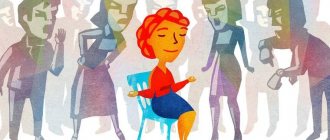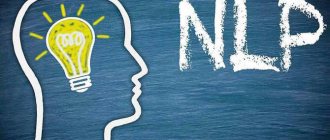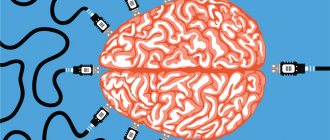Choice reaction
- Game "Edible-Inedible". In essence, this is the simplest “reaction of choice”, when one action is performed on one stimulus, and an action of the second type is performed on another. Groups of stimuli can be different: living-non-living, loved-unloved.
The selection reactions include the following games: “Sparrows and Crows”, “Legs and Head”, “Lilliputians and Giants”. These are games of the same type, but with a different plot (so that the child’s interest is not lost). Instructions: “When I say “sparrows,” you need to sit down and become small, like a sparrow. And when I say “crows,” you need to stand up and flap your wings” (in the version “Legs and Head” - you just need to show the desired part of the body; in “Lilliputians and Giants” - also become small or big according to the instructions).
- When a simple choice reaction has been mastered, we introduce a complicated choice reaction, that is, in the old plot we say that now you need to do everything the other way around. Plus we add “noise”, that is, we ourselves do it incorrectly, and the child must keep his program and carry out it as it was in the instructions. Sometimes I say: “We do what we see with our eyes. But the ears are deceiving." And then we change the reference analyzer: “We believe our ears, but our eyes deceive.” Thus, the program constantly changes, and it becomes more and more difficult for the child to keep it (the level of difficulty of the game increases).
- Separately, I would like to say about the game “4 Elements”. This is also a choice reaction, but there are 4 stimuli and 4 actions. Instructions: “When I say “fire”, we hold our hands in front of us in the form of a pyramid, “water” - we make waves with our hands, “earth” - we squat down and touch the ground with our palms, “air” - we stand on tiptoes and pull our arms towards ceiling." Here you can also complicate things with the help of noise (we say one thing, show another, confuse the child to complicate things).
- Depending on the accompanying correctional tasks, you can change the content for yourself, for example, for a speech therapist on phonemic analysis there will be this option: if you hear a given sound at the beginning of a word, jump, if at the end, clap your hands, and if in the middle, stamp your foot. A complication will be changing the reaction according to the instructions, changing the given sound or turning off some reaction (for example, if we hear the sound at the end, then we do nothing; it is difficult for the child to slow down the action that he did before).
Features of RPS methods
Mental self-regulation is ways to manage your own physical, mental and emotional state by performing light exercises, thinking skills or deep visualization. After mastering the technique, you can improve your psycho-emotional state, learn to manage behavior, improve productivity and understand how to make decisions correctly.
Self-regulation in psychology is a diverse phenomenon, the most common approaches to its development are:
- neuromuscular relaxation;
- autogenic and ideomotor training;
- sensory reproduction of images.
The objectives of these methods are:
- reduction of stress or emotional tension;
- reducing the possibility of undesirable consequences;
- mobilization of resources to achieve the plan.
Neuromuscular relaxation
Neuromuscular relaxation is a set of gentle physical exercises designed to reduce nervous tension and relax the muscles of the body.
The main idea of this approach is to calm the psyche through active muscle relaxation. With proper execution and alternation of the necessary exercises, you can achieve maximum relaxation of the body and reduce the manifestation of neurotic conditions and get rid of insomnia.
Autogenic training
Autogenic training (autotraining) is one of the most universal methods of relaxation that you can master on your own. It is a set of mental exercises to relax the body and mind. The essence of the approach is to relieve tension through absolute relaxation, reduce stress and the feeling of fatigue.
Autotraining is in many ways similar to self-hypnosis, since it uses the same techniques to immerse oneself in a deep, calm state, reminiscent of the borderline state between sleep and wakefulness. The classic method of auto-training consists of 2 steps: physical relaxation using mental scanning of the whole body, and deep visualization of relaxation.
Ideomotor training
Ideomotor training is an effective way to improve your own cognitive or professional skills. The essence of the approach is to mentally experience the situation, reproducing the sensations associated with future activity (the sensations of performing, playing sports or playing the piano).
In order for ideomotor training to be as effective as possible, it is necessary to imagine the maximum number of details and your own feelings, to see yourself as an actor.
This training promotes self-programming, increases confidence in one's own competence and gives a sense of control over the situation.
It is necessary to train at 2 levels:
- external (active visualization of the situation);
- internal (imagine visual, auditory and tactile sensations from one’s own experiences at one or another moment of visualization).
Sensory reproduction of images
Sensory imagery is a relaxation method with active visualization of a positive situation that reflects the achievement of the desired (for example, imagining a walk in the forest or a successful public speech).
For this method to bear fruit, you must use deep visualization:
- draw a detailed image of an imaginary situation;
- breathe deeply and slowly;
- try to evoke positive emotions and pleasant sensations from the mental image.
This relaxation technique aims to calm the nervous system and regulate blood pressure.
Program hold and braking
- "Invitation to the Ball." This is also an old game. The rules are introduced as follows: “The lady sent you an invitation to the ball and a hundred rubles. Buy what you want, don’t say “yes” or “no”! Will you go to the ball? We explain to the child that you need to answer questions however you like, but you cannot say “yes”, “no”, “black”, “white”. As soon as he said it, he lost!
- "Arms, legs, head." This is a very difficult game for most preschoolers and many younger schoolchildren. It is necessary to show the named part of the body, but with a delay of one unit. The presenter says: right knee (show nothing), nose (show the right knee), left heel (show the nose).
- "Please!". You need to do what the presenter says, but only if he said “please!”
- “The sea is agitated once.” This is another old game. You can play in a group format. Let me remind you of the rules. The presenter says: “The sea is worried once, the sea is worried two, the sea is worried three (at this time the players sway, pretending to be the sea)! The naval figure, freeze in place!” At this moment, all players must freeze in the form of something marine (an object or animal, bird, fish) and not move until the leader solves the figure. Then the roles change.
- “The hippos ran and pressed the button.” This is a group game. The leader stands in the center and a circle is drawn around him (diameter approximately 3 meters). You need to mark the center of the circle and divide it into sectors, according to the number of players or a little more. Each sector is assigned a number. The presenter stands in the center, closes his eyes and reads the saying: “The hippos ran and pressed the button. STOP". Until the word “STOP”, players run in a circle and stop on command. The presenter, with his eyes closed, calls the number of any sector. The player from this sector begins to run away. The presenter waits for a while, then shouts “stop!” again. The player stops. The presenter must estimate the distance to the player in steps (these can be ordinary, giant, frog, Lilliputian, camel steps). After that, he steps the stated number of times and touches the player (if he doesn’t guess correctly, he loses).
As you can see, many games have been familiar to us since childhood, but they have not lost their relevance and help develop self-regulation.
Neuropsychologist Alexandrova O.A.
Self-regulation tasks
Self-regulation in psychology is a diverse range of influences on a person’s internal state and behavior, used to effectively solve problems such as:
- increased confidence;
- reduction of anxiety, fear;
- development of desired skills and professional competence.
Self-regulation as an approach in psychology is used to solve various problems, the most obvious of which are the following:
- knowledge of the importance of psychological states and their role in human life;
- mobilization of forces in critical situations, development of motivation;
- formation of persistent and conscious determination;
- comfortable adaptation in a professional environment;
- increasing efficiency and productivity;
- decision making and prioritization;
- improvement of cognitive and emotional-volitional reactions;
- awareness and adjustment of subconscious beliefs;
- increased self-control and willpower;
- reflection on life experience;
- developing the skill of restraining oneself in conflict situations;
- increasing stress resistance;
- developing concentration and maintaining clear thinking;
- rapid recovery of emotional background after shocks.
Self-regulation is a multifaceted phenomenon of the human personality, which is studied by various disciplines - biology, psychology, sociology and economics - with the aim of diversified human development.
Removing manifestations of stressful conditions
The most common way to use self-regulation of psycho-emotional state is to reduce the manifestations of the body’s stress reactions. The ability to distract from disturbing thoughts, gather attention and concentrate in difficult situations is one of the manifestations of a person’s active use of self-regulation skills.
Reducing the degree of emotional tension
Another important function of self-regulation is reducing the degree of emotional tension, regardless of the reasons for its occurrence. Psychology has developed many techniques that help reduce emotional arousal and negative attitudes associated with internal experiences, uncertainty or indecision.
The main ways to reduce emotional tension are tools such as meditation, active visualization and light exercises.
Preventing Undesirable Consequences
An important task of self-regulation is to reduce stress and anxiety due to the expectation of undesirable consequences in the future. This outcome is possible due to the ability to objectively assess one’s own strengths and weaknesses, visualize exciting moments (public speaking), using self-hypnosis that everything will be successful.
Strengthening resource mobilization
One of the positive aspects of developing a skill is the ability to mobilize one’s own resources and willpower. It is with developed self-regulation that scientists associate the development of such leader traits as responsibility, independence, perseverance, flexibility and a high level of stress resistance.
This is not an innate character trait, but the result of long-term self-control and self-knowledge, which at a certain point becomes automatic.
Relieving tension
For many of us, relaxation is rest at the end of a busy day. And for most people it happens the same way – in front of a TV screen or a home computer monitor. But this is far from the best way to relieve emotional stress; rather, it is a kind of illusion of relaxation. The senses remain in working order - you experience emotions, worry. From a physiological point of view, this method is not suitable for dealing with stress, because in order to fully restore mental strength, you need to activate the body’s natural relaxation reaction. There are special techniques for this (yoga, qigong, tai chi, Zen), but even without knowledge of them, you can, by devoting some free time to practice every day, learn to cope with anxiety and depression, control anger, and avoid many diseases of the cardiovascular and nervous systems. The sets of exercises given below are built taking into account accessibility and feasibility, and include elements of yoga, meditation practices, and breathing exercises. Remember that you can improve their results by using relaxation techniques along with physical exercise and ensuring proper rest through healthy sleep.
As you begin to practice various relaxation techniques, remember the following. Learning the basics of relaxation techniques is not difficult, but it does take time and some effort. Most experts recommend exercising at least 10-20 minutes a day. Those attending special sessions to relieve stress spend 30-60 minutes. Start small, and individual elements of the exercises can be performed right at your desk, in transport, at a bus stop.
Top 3 ways to relieve tension:










